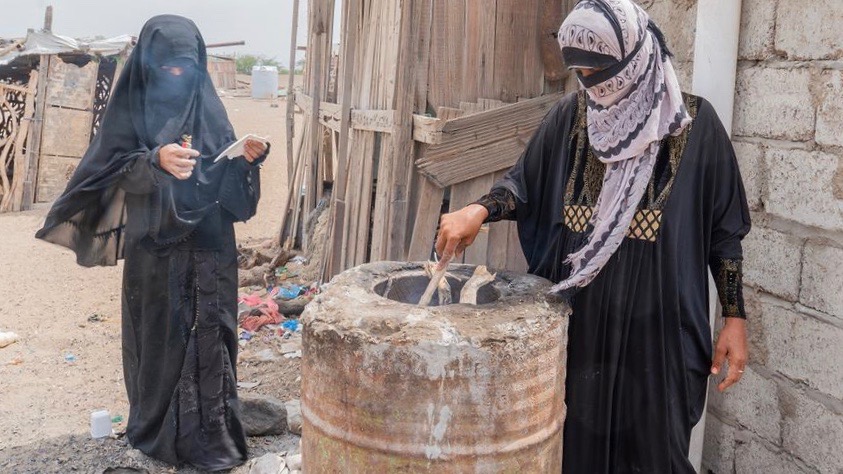With the recent developments in the region, there has been further progress in ending the violence in Yemen for the first time since 2015 when that the Saudi Arabia-led coalition intervened in the country. However, peace in the country will require the warring factions to sit together and resolve outstanding issues, paying attention to the long-term impact of the war on the society and the economy, which have been exacerbated by the imminent climate crisis.
To achieve a meaningful peace, Yemen will need increased international support to deal with the climate catastrophe along with the impact of the war and conflict, notes a fact sheet jointly prepared by Stockholm International Peace Research Institute (SIPRI) and the Norwegian Institute of International Affairs (NUPI).
War and humanitarian crisis in Yemen
The war in Yemen, which started after the invasion of the Saudi-led international coalition in 2015, has created the “world’s worst humanitarian crisis,” according to the UN. Yemen has over 4.5 million internally displaced people (IDPs) and over 80% of its total population of over 34 million is facing some level of food insecurity. According to the UN, more than 21.6 million Yemenis will be dependent on some kind of humanitarian aid in 2023.
Yemen, a country which imports more than 90% of its food needs, has been facing a strict air, sea and land blockade imposed by the Saudi-led coalition since 2015. The war and blockade have killed hundreds of thousands of Yemenis and destroyed basic civilian infrastructure such as water supply, health systems, schools, and other basic governance systems in the Arab world’s poorest country. The situation has slightly improved after a ceasefire came into effect in April 2022.
However, the long-term impact of the war continues to ravage Yemen. Just to quote one example from the fact sheet, Yemen was making slow and steady progress in the HDI index between 1990 and 2015. This progress has not only stopped but has been reversed since the war. Climate change and environmental degradation are adding to the problem.
Climate change exacerbating the humanitarian crisis
According to the fact sheet, the mean annual temperature in Yemen is expected to increase by 1.2-3.3 degree Celsius by 2060, leading to large-scale changes in the country’s climate with irregular patterns of rain.
The report notes that though “the causal relationship between climate change and conflict is not linear or predetermined,” there are “multiple pathways through which climate change interacts with political, social and environmental stresses to compound existing vulnerabilities and tensions.”
According to the report, there are four pathways through which one can understand the links between climate change, peace and security—livelihood deterioration, migration and mobility, military and armed actors, and political and economic exploitation and mismanagement.
Since agriculture provides employment to nearly 60% of the Yemeni population, any climate catastrophe means loss of employment for a significant number of people.
In Yemen, climate related stressors have significantly worsened livelihood conditions. Since the majority of Yemen’s agriculture is based on smallholders using groundwater for irrigation, any droughts—like the one between January and June last year—and the floods which followed, can destroy this source of livelihood in the short and medium term and “negatively impact social cohesion within the affected communities, as competition over arable land and water increases.”
Yemen is already considered one of the most food-insecure and water scarce -countries in the world. Apart from climate related reasons, mismanagement of resources and persistent conflicts are two major reasons for water scarcity, the report notes.
Yemen is poorly equipped to deal with the impact of climate change and the lack of a central authority is only one aspect of the problem. Traditional conflict resolution institutions and mechanisms have been in a bad shape or dysfunctional for a long time due to the war and conflict.
Even before the war, in 2010, the Yemeni government had estimated that nearly 4,000 people were killed annually due to conflict over water resources and fertile land. This number is expected to increase in the coming years if effective measures are not taken immediately.
Displacement, vulnerable groups and increasing risk of conflict
The climate catastrophe in 2022 affected over 510,000 people directly and intensified the humanitarian crisis, which led to a 93% increase in primary and secondary displacement. The number of people affected by food insecurity increased and socially disadvantaged social groups, such as women, girl children, and refugees, suffered the most.
The fact sheet notes that internally displaced Yemenis are “particularly vulnerable to extreme weather and natural hazards,” which can cause secondary displacement—as in 2020 when over 230,000 people had to be resettled due to their camps being flooded.
There is also rural-urban migration and nearly 100,000 refugees from Somalia and Ethiopia are living in Yemen as well.
The report notes that “the flow of IDPs and migrants to host communities increases the pressure on food, shelter and basic services such as water, energy and healthcare, as well as increasing competition over humanitarian aid in already resource strained areas. This could have an adverse effect on social cohesion and, in some cases, contribute to local conflict.”
The fact sheet also claims that due to displacement and lack of economic sustenance, some families have reverted back to regressive practices such as child marriages.





